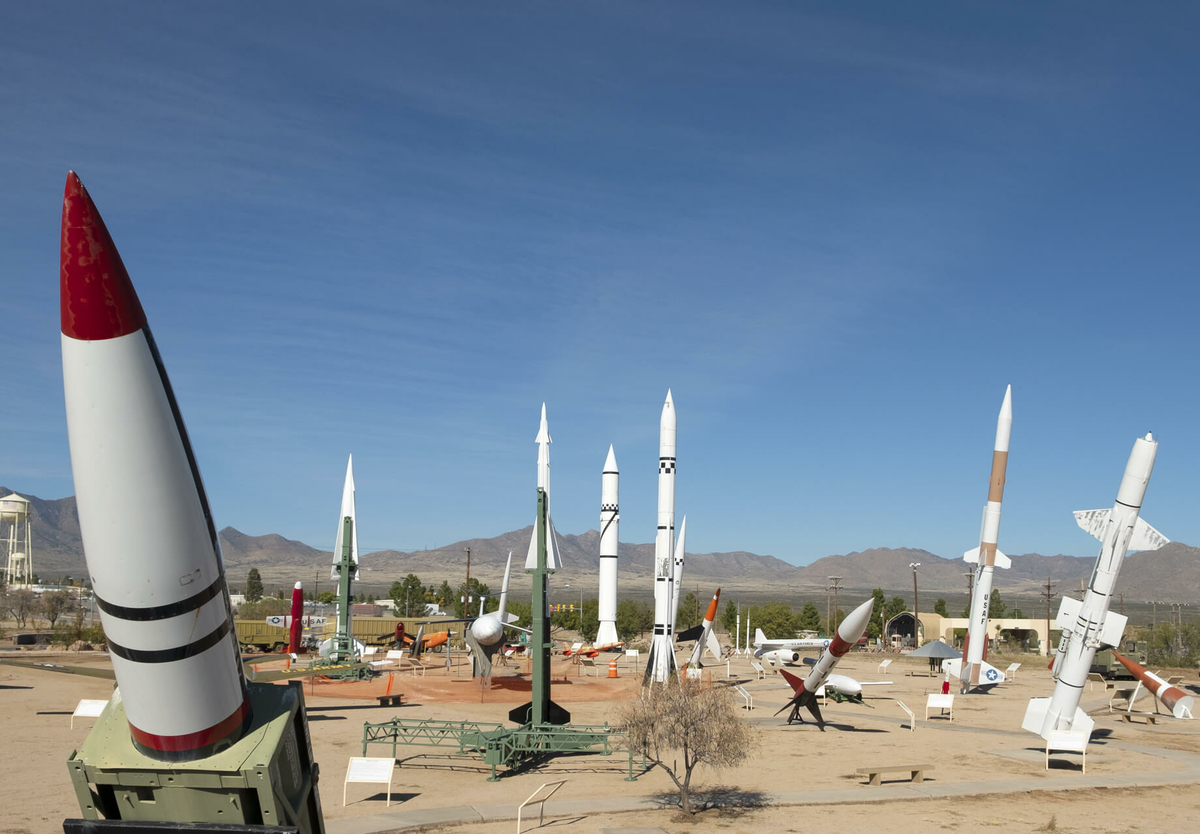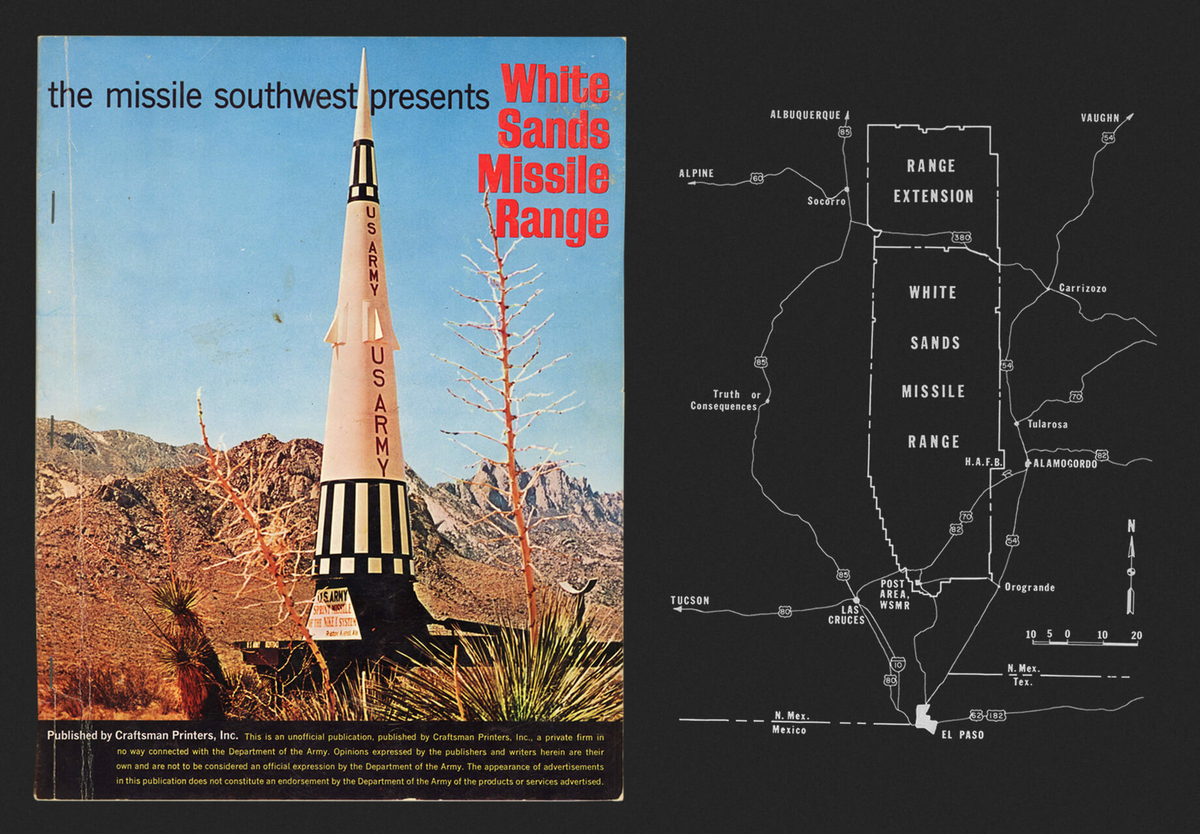White Sands Missile Range Park
Visited
2017.11.10
White Sands Missile Range, New Mexico
On the day that I reached White Sands Missile Range the museum was closed for a holiday, but the guards at the gate said it was fine to walk the outdoor missile park next to the museum, which displays over fifty different missiles, rockets and other things that were tested or used at White Sands.


On July 9th, 1945, the White Sands Proving Ground (WSPG) was established in New Mexico as a test site for German and American rockets, its location chosen for fulfilling the requirements that it be flat, unpopulated, and have year round clear skies. Seven days later, at 5:29:45 AM on July 16th, 1945, the world entered the atomic age with the test detonation of “The Gadget” at a location near the northern boundary of the range, referred to as the “Trinity Site.” This was project Trinity, the world’s first detonation of an atomic weapon. On September 26th, 1945, the first rocket was launched from White Sands Proving Ground — a modified Tiny Tim, a US Navy air-to-surface rocket that was used in WWII. In its first full year of operation, in 1946, 32 missiles would be launched from the site. From there, available firing records released to the public put the total at 54,813 from 1945 to 1977. And with all of the activity, tracking and communications networks were installed in the surrounding mountains, making WSPG one of the most heavily instrumented test sites in the world. The US Army, under whom the site is run, the US Navy, USAF and NASA would all have a presence at White Sands.
It was on May 1st, 1958, that the name of the site was changed to more accurately reflect its mission, and it became White Sands Missile Range (WSMR), also referred to as the “Birthplace of America’s Missile and Space Activity.”

The White Sands Missile Range Museum and Missile Park trace the history of American missile and space activity, and are free and open to the public year-round. While the museum adheres to limited holiday and weekend hours, the Missile Park in particular is open from sunrise to sunset every day. What follows are photos I took on my walk through the park — by no means an exhaustive and full account of what is on display there. If you want to learn more, the museum’s website has a dedicated page for the park here.



[ Note on Subject ]
Patriot (PAC-2) Air Defense System. First fired in 1970.

[ Note on Subject ]
Pershing I Tactical Ballistic Missile. First fired in 1963.

[ Note on Subject ]
Pershing II Tactical Ballistic Missile. First fired in 1982.

[ Note on Subject ]
Redstone Tactical Ballistic Missile. First fired in 1958.

[ Note on Subject ]
Aerobee 170 Sounding Rocket. First fired in 1947.

[ Note on Subject ]
Loki-Dart, a low-cost meteorological sounding rocket and the skinniest rocket in the park. First fired in 1951.

[ Note on Subject ]
DOVAP helix transmitter antenna. Used as an early guidance and control system for rockets, relying on a Doppler effect.

[ Note on Subject ]
Copperhead CLGP (Cannon-Launched Guided Projectile) that was fired out of a Howitzer (seen in the background). First fired in 1972.

[ Note on Subject ]
LARK Anti-aircraft Missile. History's first missile to intercept a moving target, in 1950.

[ Note on Subject ]
TALOS Long Range Surface-to-Surface Missile. First fired in 1951.

[ Note on Subject ]
Genie, an air-to-air nuclear missile, designed for taking out whole formations of enemy bombers. After launching the weapon, the firing aircraft had to pull away in a sharp turn and get its ass out of there in a hurry to avoid the nuclear blast. First fired in 1956.

[ Note on Subject ]
In the foreground, Honest John, a nuclear tactical rocket. The first nuclear capable surface-to-surface rocket in the US inventory. First fired in 1951.

[ Note on Subject ]
Drones and RPVs.

[ Note on Subject ]
Nike Hercules Anti-aircraft Missile. First fired in 1955.

[ Note on Subject ]
Balloon Launched Decelerator Test Vehicle (BLDT). Used to test the Viking Mars Lander decelerator in a simulated Mars environment.

[ Note on Subject ]
Cab that was part of the tower at White Sands Space Harbor where the Space Shuttle would land. Sadly, they painted over the big red NASA Worm logo.



